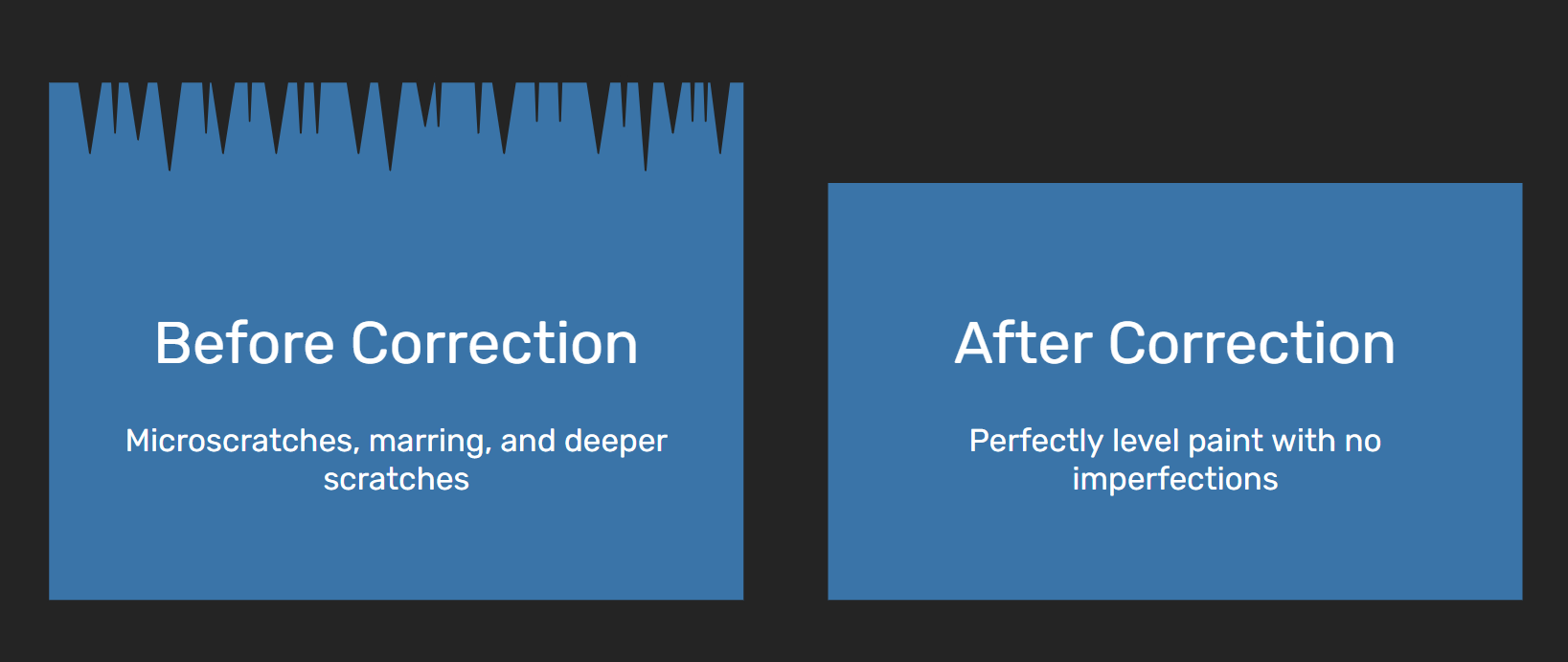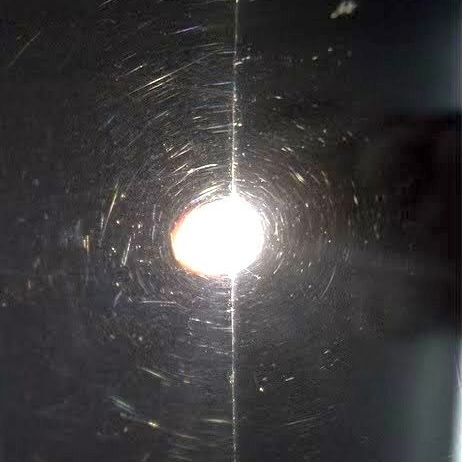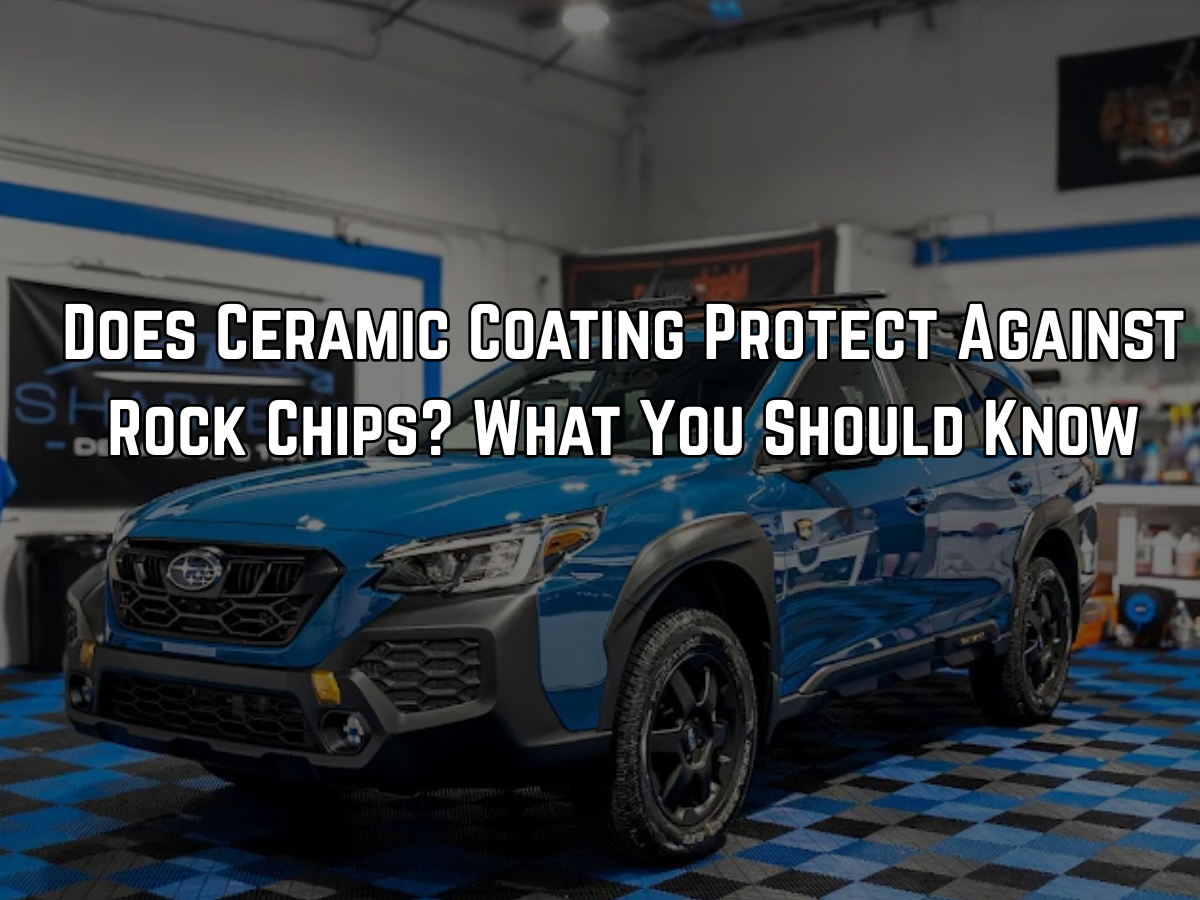Types of Paint Correction
How Paint Corrections Work
The reason you see scratches at all it because they create a bunch of microscopic divots in your vehicles clear coat, this causes light to refract differently which makes the scratches visable. The human eye is not able to see the microscratches themselves. If you look at your vehicle in dim lighting like a garage, your paint will appear to look perfect. But if you pull it out into the sun or turn on the lights, you'll all of a sudden see hundred of small scratches.
To fix this you need to correct your paint. There's many typers or polishes, compounds, and pads used in paint correction. First we use a medium to heavy cut compound, combined with a cutting pad. This will shave down the clearcoat and remove all of the larger defects while leaving a bunch of really small ones. Next we use a polish on a soft polishing pad, this will remove the small scratches left ny the cutting compound and leave you with a perfectly smooth clear coat. Once the clear coat is perfectly smooth, the light will all refract the same way which gives you the look of perfect paint.

1 Step Paint Correction
A 1 step paint correction is performed by using a hybrid compound and polish in order to correct the paint in just 1 step. This process will do a fantastic job of removing oxidation and light swirls/scratches. A 1 step correction can be expected to remove around 50% of light swirls and scratches on most cars, on new cars with under 2000 miles we can sometimes get up to 70% of scratches and swirls out. This is a great option if you want your paint to look nicer and be prepped for a ceramic coating.

2 Step Paint Correction
A 2 step paint correction is performed by using a heavy cut compound, followed by a finishing polish. This method will remove all oxidation from the paint and 95%+ of swirls and scratches, the only marks that may remain are deep scratches that have cut through the paint. This service is perfect for those who want their vehicle to have a showroom finish and be in perfect condition. To protect this finish, we always apply a ceramic coating afterwards.





